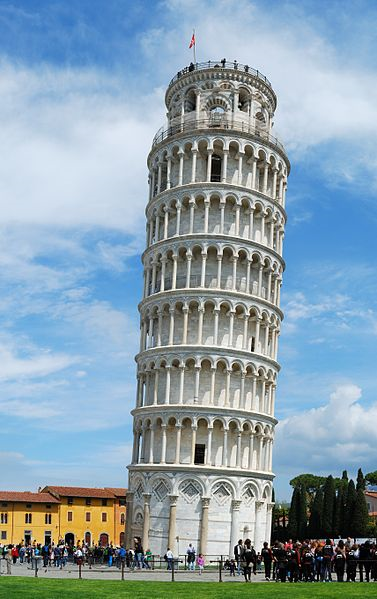Intercepts of Horizontal and Vertical Lines
Horizontal
Horizontal lines are lines that follow the horizon. They look like this...

Imagine now horizontal lines on the Cartesian plane. Horizontal lines are parallel to the $x$x axis, and as you move along a horizontal line, the $x$x value will change but the $y$y value will remain the same.
A horizontal line will:
- only have a $y$y intercept
- have an equation of the form $y=b$y=b (every point on the line has a $y$y value of $b$b)
- have a $y$y intercept at $b$b, and will not have any $x$x intercepts
Vertical
Vertical Lines are lines that go up and down (they are perpendicular to horizontal lines).

Imagine now vertical lines on the Cartesian plane. Vertical lines are parallel to the $y$y axis, and as you move along a vertical line, the $y$y value will change but the $x$x value will remain the same.
A vertical line will:
- only have an $x$x intercept
- have an equation of the form $x=b$x=b (every point on the line has an $x$x value of $b$b)
- have an $x$x intercept = $b$b, no $y$y intercept
Parallel and perpendicular lines
Parallel lines
These occur when we have 2 lines that NEVER cross each other and have no points in common. For this to happen the two lines need to have exactly the same slope. If they have different slopes they will cross.
Parallel lines occur often in the real world.

Consider the line $y=x$y=x, with slope=1. What would happen if we shifted every point on the line $2$2 units upwards?
We would get a new line that is parallel to $y=x$y=x, but with every point having a $y$y value that is two greater: $y=x+2$y=x+2
So parallel lines are just shifts of one another.
Parallel lines on the Cartesian Plane have the same slope (slope).
Perpendicular Lines

The Leaning Tower of Pisa
Perpendicular is the word used to describe when one object meets another at exactly 90°. So perpendicular lines are simply lines that cross each other at exactly 90°.
To see how important the idea of perpendicular really is just think about your floor, walls and roof. If a builder does not take care to make the walls perpendicular to the floor and ceiling you'll end up with an unstable house.
The leaning tower of Pisa is a famous example of perpendicular angles gone wrong! Prior to restoration work performed between 1990 and 2001, the tower leaned at an angle of 5.5°, but the tower now leans at about 3.99°. That means the acute angle made by the tower and the ground is 86.01°.
Perpendicular lines on the Cartesian plane will have one point of intersection, and at that point of intersection the angle between them will be 90°.
Intersections and concurrent lines
Because lines extend forever in both directions, unless they are parallel they will intersect somewhere.
Now when 3 or more lines all pass through the same point we give those lines a special name: they are called concurrent lines.
The point of intersection is called the "point of concurrency", labelled point P below.
.
Intersections of two lines
Where two lines intersect, they share a common point. The $x$x and $y$y values of this point satisfy the equations of both lines.
Example
If one line has equation $y=2x+3$y=2x+3 and another has equation $y=x+6$y=x+6 then the point of intersection is where both the $y$y's are the same value. If they are the same value, then we can say that:
(at the point of intersection) $2x+3$2x+3 is equal to $x+6$x+6
$2x+3=x+6$2x+3=x+6
We can then solve for the $x$x value at the point of intersection.
$2x-x=6-3$2x−x=6−3
$x=3$x=3
Now that we have $x$x, we can find the $y$y value at the point of intersection.
Which equation should we substitute back into? Well since the point is common to both lines, you can choose either equation.
$y=x+6$y=x+6
$y=3+6$y=3+6
$y=9$y=9
So these lines cross at the point $\left(3,9\right)$(3,9).
Here are some worked solutions.
Question 1
At the point where the lines $y=-4x+1$y=−4x+1 and $y=x+11$y=x+11 intersect, $x=-2$x=−2. What is the $y$y-value at this point?
Question 2
Consider the following linear equations:
$y=2x-4$y=2x−4 and $y=-2x-4$y=−2x−4 What are the slope and $y$y-intercept of the line $y=2x-4$y=2x−4? What are the intercepts of the line $y=-2x-4$y=−2x−4? Plot the lines of the 2 equations on the same graph.
State the values of $x$x and $y$y which satisfy both equations.
$x$x = $\editable{}$
$y$y = $\editable{}$
slope
$\editable{}$
$y$y-value of $y$y-intercept
$\editable{}$
$x$x-value of $x$x-intercept
$\editable{}$
$y$y-value of $y$y-intercept
$\editable{}$